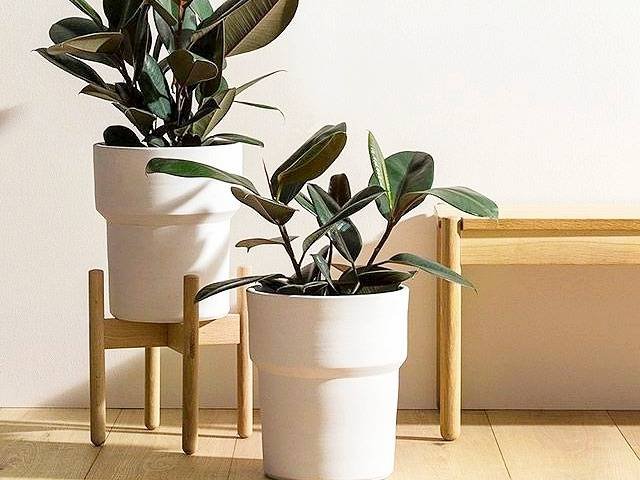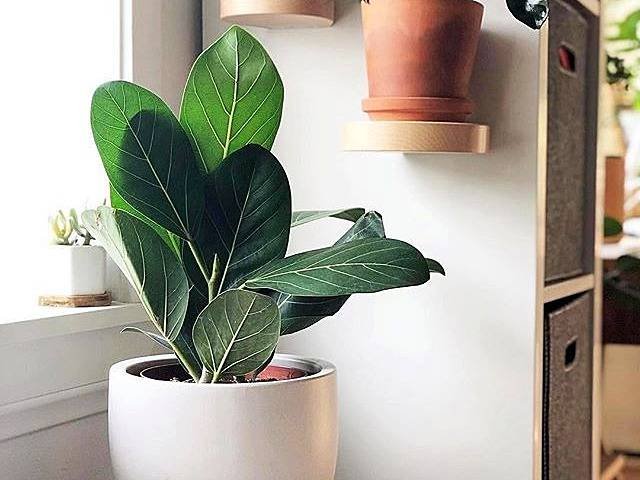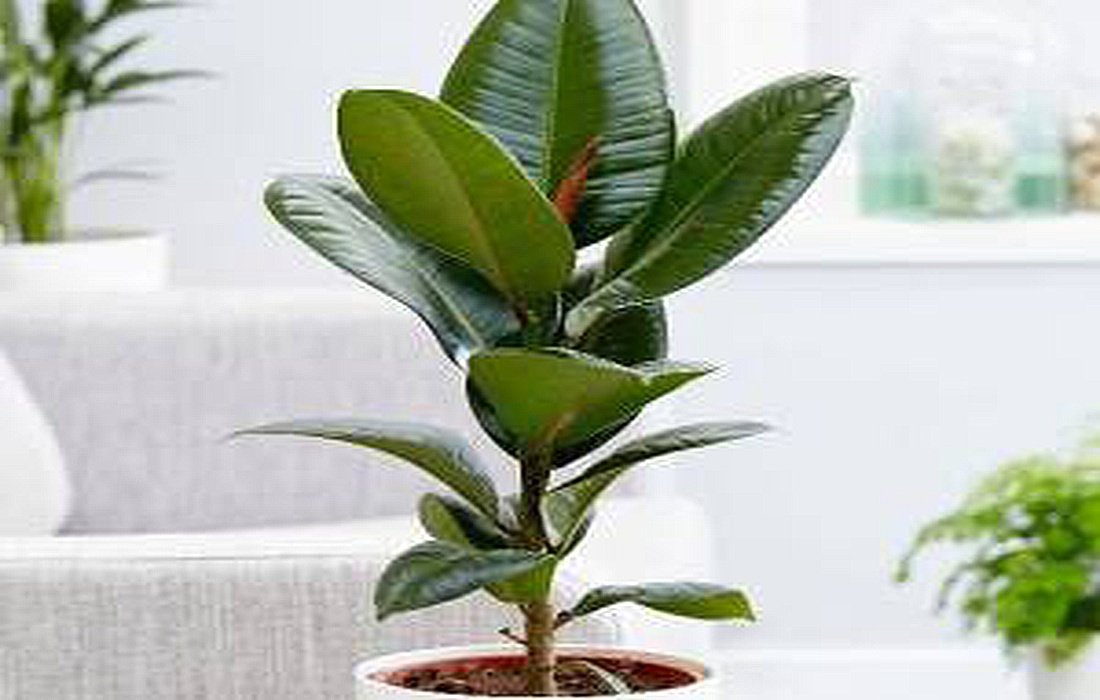Growing and CaringFicus elasticaAt Home
If you look into specialized gardening books, you’ll find that this shrub is one of the easiest plants to care for. In recent years, it has gained popularity and truly deserves this attention, which is why we cover it here inSelMagzWe introduce care tips and methods for this plant. The Ficus elastica has glossy leaves, losing some during the autumn season. This shrub is used for decorating homes and workplaces, but maintaining its beautiful appearance can be a bit challenging.
Care and Cultivation Tips for Ficus Elastica
Size
This is a ground plant, and typically the smaller varieties are more popular. This shrub can grow between 50 to 60 centimeters tall.
Growth Rate
The growth rate of this plant increases in late spring and summer, precisely when most houseplants are at their peak growth.
Exposure to Light
This shrub is a houseplant that needs regular light and should ideally be placed in a spot with southern or eastern light. However, be careful to avoid direct sunlight throughout the day, as the intense sun can scorch it, while low light will halt its growth. Plants kept in dark places will shed their lower leaves and become elongated and misshapen, with faded colors.

Watering
In summer, it’s best to water this plant every week, while in winter, you can reduce watering to every 10 to 14 days. Adjust the watering according to its growth status and consider the light as well. For a healthy Ficus, avoid over-drying the soil and ensure there’s enough moisture. Always check the drainage holes before watering.
Optimal Temperature
If your home is comfortable for you, without feeling too hot or cold, it’s likely the plant is in a suitable temperature range as well.
This plant prefers temperatures between 15 to 21 degrees Celsius and can survive winter temperatures lower than 10 degrees Celsius. It also appreciates humidity, but not excessively. These plants are sensitive to temperature changes, so it’s best to place them in areas with stable conditions.
Plant Fertilizer
Applying plant fertilizer is best suited for early spring. Use fertilizer for indoor plants, and if you don’t have any, liquid organic fertilizer will work as well. You can apply this again in late summer but be careful not to over-fertilize, as too much can scorch the plant.

Soil
Make sure to use organic potting soil for this plant, which must also have excellent drainage. The components of this soil should be of very high quality.
Pots Change
The sooner you change the pot, the taller your plant will grow. However, this growth will also mean more frequent pot changes, which you can do every two to four years, depending on the current size of the plant.
To change pots, tap the bottom and sides of the pot after the soil has dried out, and gently remove the plant. Place it in a larger pot and fill with fresh soil. If your new pot is significantly bigger, it may disrupt the plant’s growth. If you can’t change the pot, simply replace a few centimeters of the top soil with fresh soil.
Propagation
Propagation is exciting, and you can use air layering. Cut a portion of the root and place it in rich soil in another pot while leaving part of the root exposed to ensure better growth than the previous plant.
For plant multiplication, you can try the leaf cutting method. Using a sterilized knife in early spring, cut a relatively young leaf from a branch. Apply rooting hormone to this leaf and plant it in sterilized soil. Move the plant to a warm, humid location and keep the soil moist.

Pruning
This method helps control the size of your shrub, preventing excessive height. However, it won’t stop width growth. Always keep the cut sections clean and avoid pruning during winter. Ensure your cutting tools are clean and disinfected.
Pests
Like other houseplants, the Ficus shrub can be threatened by pests such as insects, gnats, and spider mites. The best approach is to watch it carefully and prevent any pests from approaching.
Common pests that attack the plant include spider mites and mealybugs. For these pests, you can use systemic insecticides to combat them.
Nematodes and thrips are also other pests of this plant.
If the plant is kept in hot, humid conditions, it may suffer from fungal leaf spots.
To prevent pests and ensure your plant’s leaves stay fresh, mix a teaspoon of lemon juice in a liter of water, shake well, and then clean the leaves with a cotton cloth.
Symptoms and Treatments
Wilting and drying of leaves is due to delayed watering or direct sunlight. To treat this, after removing the dried leaves, place the pot in water for about 15 minutes to allow the roots to absorb water.
Yellowing leaves result from overwatering, consistently wet soil, and soil saturation. Before watering again, allow the potting soil to dry out.
If leaves yellow and you see spider webs underneath, spider mites have attacked, and you can use arachnicide to eliminate them.
Poor root performance or a small pot can halt growth and cause smaller leaves, so in such cases, check the roots and repot in a larger pot if necessary.
The appearance of white, cotton-like spots on the leaves or stems indicates an infestation by mealybugs. To get rid of them, spray with insect pesticide.
One symptom that shows the plant is infested is the appearance of pale leaves with brown spots.CoffeeFor treating these pest symptoms, wet the spots with a cotton ball soaked in insecticide or use a systemic insecticide to spray. Repeat this process after fifteen days.
Toxicity
This plant can cause allergic reactions on people’s skin. Therefore, after handling or touching it, thoroughly wash your hands, as issues and sensitivities after contact can affect your stomach and lead to problems likeDiarrheaand vomiting, depending on your sensitivity level.

Important Tips for Caring for Ficus Shrub
- Don’t worry about dried roots of this plant, as they are part of its natural growth cycle.
- As mentioned in SelMagz, you may notice burn marks on leaf tips due to water or fertilizer quality.
- Always keep this plant away from your face and use gloves while handling it. Your gloves should be long enough.
- The large, shiny leaves of the Ficus can easily get dirty, and when dirty, you may see white spots on them. The best way to clean them is to use a soft, damp cloth without debris to wipe the leaves.
- This plant does not require a high cost for its rapid growth.
- If you have enough light and space at home, do not hesitate to use this shrub as a houseplant.
- The key to success in caring for this plant is maintaining balance: that is, you should keep watering, fertilizing, soil type, and light to the plant in perfect moderation. The plant will show you what it needs more or less of; just keep it for a few months to notice these needs.







